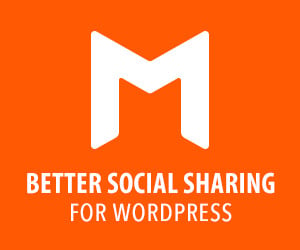Diversity and inclusion in HR management are crucial for fostering innovation and improving workplace dynamics. According to a McKinsey report, companies with greater diversity are 35% more likely to have financial returns above their industry medians. This post explores the benefits of diverse work environments, strategies for implementing inclusive practices, and the role of HR management in cultivating a culture where every employee feels valued. Understanding these elements is essential for organizations seeking to thrive in a competitive global market.
Understanding Diversity and Inclusion in HR Management
Diversity and inclusion are crucial elements in modern HR management, shaping the workplace culture and employee interactions. Grasping these concepts helps organizations create environments where everyone feels valued and respected. As businesses aim for global competitiveness, embracing diversity and fostering inclusion are no longer optional but essential strategies.
Defining Diversity in the Workplace
Diversity in the workplace refers to the variety of differences among people, encompassing race, gender, age, ethnicity, sexual orientation, disability, and more. These differences bring unique perspectives and ideas, leading to richer discussions and innovative solutions. Recognizing diversity means valuing each individual’s unique background and experiences, making them an integral part of the organization.
The Role of Inclusion in Employee Satisfaction
Inclusion is about creating a work environment where all employees feel welcomed and valued. When employees perceive that their contributions are recognized and their voices heard, job satisfaction levels rise. Inclusion fosters a sense of belonging, leading to increased motivation and engagement. Ultimately, inclusive workplaces contribute to happier, more fulfilled employees.
How Diversity and Inclusion Drive Business Success
Diversity and inclusion are not just ethical imperatives but key drivers of business success. Organizations that embrace these values often see improved performance and profitability. Diverse teams can better understand and cater to global markets, thanks to varied perspectives. Inclusion enhances teamwork, enabling innovative problem-solving and improved decision-making.
Benefits of Implementing Diversity and Inclusion Strategies
Implementing diversity and inclusion strategies offers a competitive edge, promoting innovation and employee satisfaction. These strategies go beyond mere policy changes, requiring a commitment to cultural transformation. The benefits of a diverse and inclusive workplace extend from the individual level to organizational success.
Enhancing Creativity and Innovation Through Diverse Teams
Diverse teams bring a wealth of different ideas and perspectives, fueling creativity and innovation. When people from varied backgrounds collaborate, they challenge assumptions and inspire novel solutions. This diversity of thought is a powerful driver of innovation, leading to groundbreaking products and services.
Improving Employee Retention and Job Satisfaction
Organizations that prioritize diversity and inclusion often experience higher employee retention rates. Employees who feel valued and included are more likely to remain loyal to their employers. This sense of belonging translates into higher job satisfaction, reducing turnover and the associated costs.
Building a Positive Employer Brand with Inclusive Practices
An inclusive workplace enhances an organization’s reputation as an employer of choice. Companies known for their commitment to diversity and inclusion attract top talent. A positive employer brand also resonates with customers, who increasingly prefer to support businesses that align with their values.
Strategies for Promoting Diversity and Inclusion in HR
Effective HR strategies are vital for cultivating diversity and inclusion. These strategies involve proactive measures to recruit and retain diverse talent while fostering an inclusive organizational culture. By implementing these practices, organizations can create environments where everyone thrives.
Effective Diversity Recruitment and Hiring Practices
Recruitment strategies focused on diversity ensure a varied talent pool. Employers should consider biases in their hiring processes and strive for inclusive job descriptions. Partnering with organizations that support underrepresented groups can also enhance diversity in recruitment.
Creating Inclusive Policies and Employee Resource Groups
Inclusive policies are essential for supporting a diverse workforce. Organizations should develop policies that address the needs of all employees, from flexible work arrangements to parental leave. Employee Resource Groups (ERGs) provide support and advocacy, fostering a sense of community within the workplace.
Training and Development Programs for Inclusive Leadership
Leadership training programs focused on inclusivity equip managers to lead diverse teams effectively. These programs should cover topics like unconscious bias and cultural competence. By fostering inclusive leadership, organizations ensure that all employees feel supported and empowered to succeed.
Conclusion
Diversity and inclusion in HR management are crucial for fostering a dynamic and innovative workplace. Defining diversity involves recognizing various dimensions such as ethnicity, gender, and cultural backgrounds, while inclusion ensures that all employees feel valued and supported. Implementing diversity and inclusion strategies can lead to enhanced creativity, improved employee retention, and a positive employer brand. Effective practices include diverse recruitment, implementing inclusive policies, and offering training programs for inclusive leadership. These efforts not only contribute to employee satisfaction but also drive overall business success.
FAQ
What are the key benefits of diversity and inclusion in HR management?
Diversity and inclusion in HR management grow innovation, enhance problem-solving, and improve company reputation. They lead to a more engaged workforce and attract a broader talent pool. Employees feel valued, boosting morale and productivity.
How can companies foster diversity and inclusion in the workplace?
Companies can foster diversity and inclusion by implementing bias training, creating inclusive policies, and encouraging employee resource groups. Celebrating diverse cultures and promoting open communication is crucial. Leadership commitment and accountability also play a vital role.
What are common challenges in implementing diversity and inclusion strategies?
Implementing diversity and inclusion strategies often faces challenges like unconscious biases, resistance to change, and insufficient resources. Lack of leadership support and inadequate measurement tools can also hinder progress. Addressing these requires commitment and strategic planning.
How do diversity and inclusion impact employee performance and retention?
Diversity and inclusion positively impact employee performance by fostering a collaborative environment. Employees feel respected and valued, leading to higher job satisfaction and retention. This inclusive culture reduces turnover and attracts top talent.
What are the best practices for measuring diversity and inclusion success in HR?
Measuring diversity and inclusion success involves setting clear goals, using data analytics, and conducting regular surveys. Organizations should track recruitment, retention, and promotion metrics. Continuous feedback and transparent reporting ensure accountability and progress.
How does diversity and inclusion contribute to innovation and creativity in organizations?
Diversity and inclusion drive innovation by bringing varied perspectives to the table. Different backgrounds and experiences enhance creativity and lead to unique solutions. An inclusive environment encourages risk-taking and collaboration, fostering a culture of innovation.




